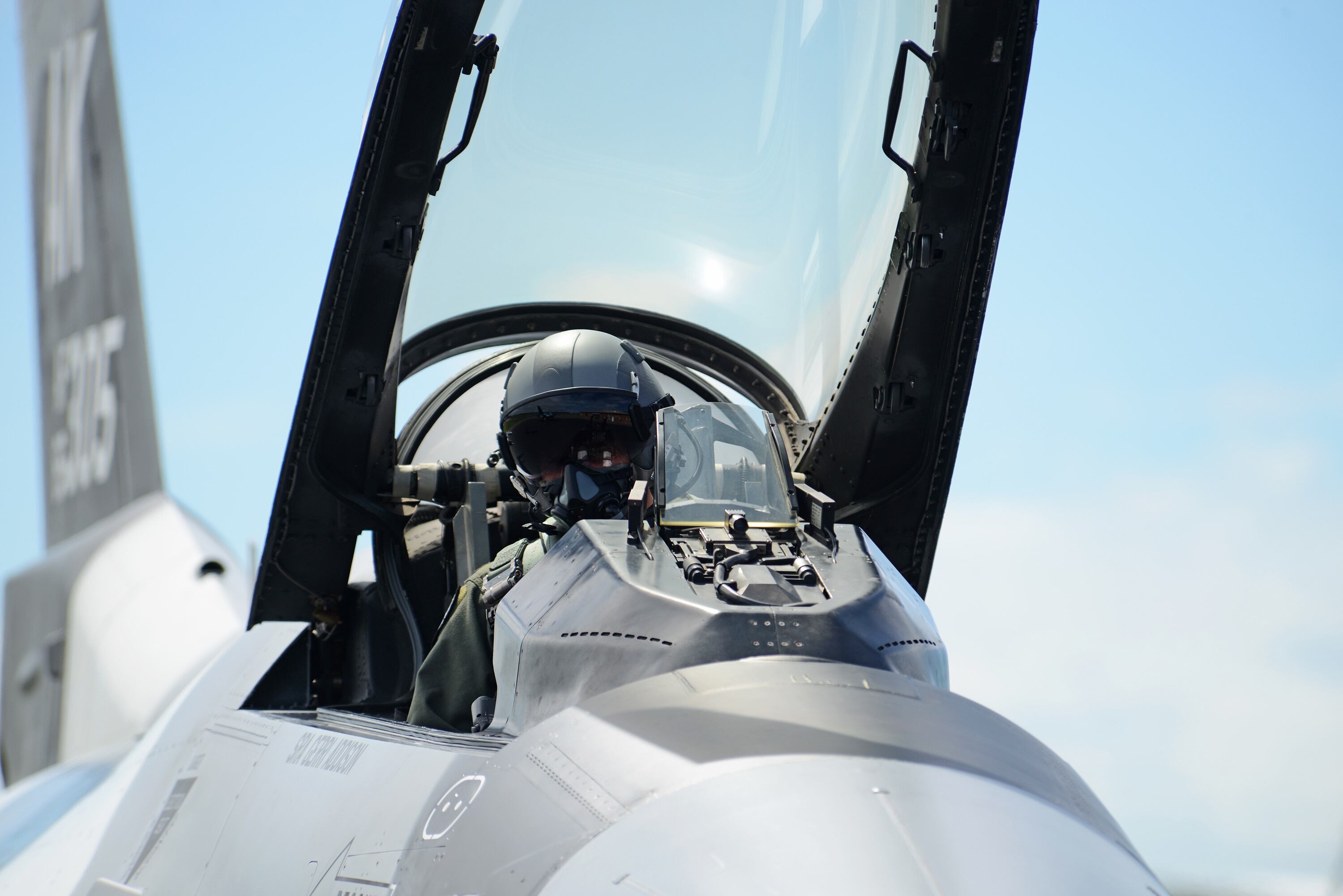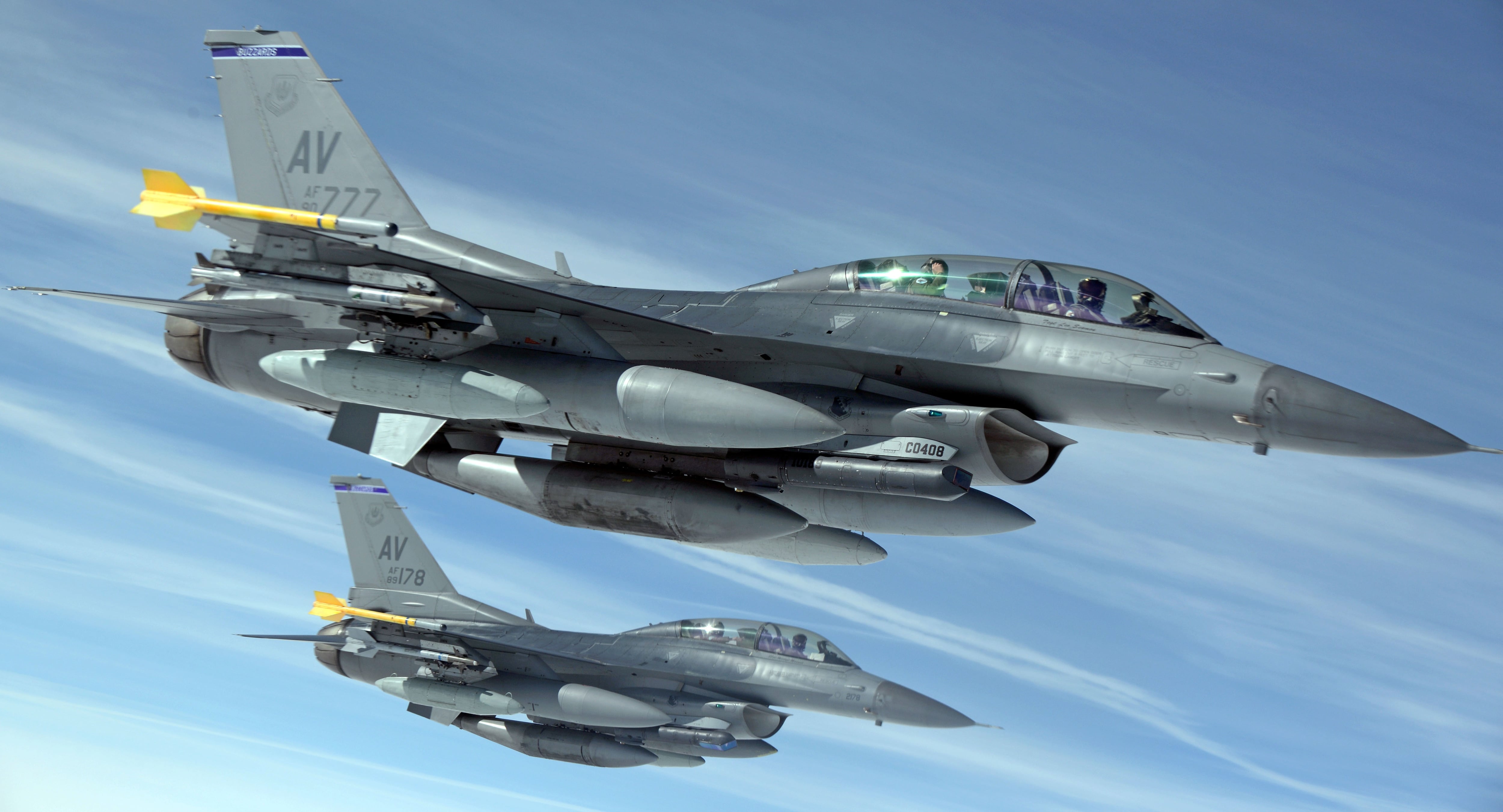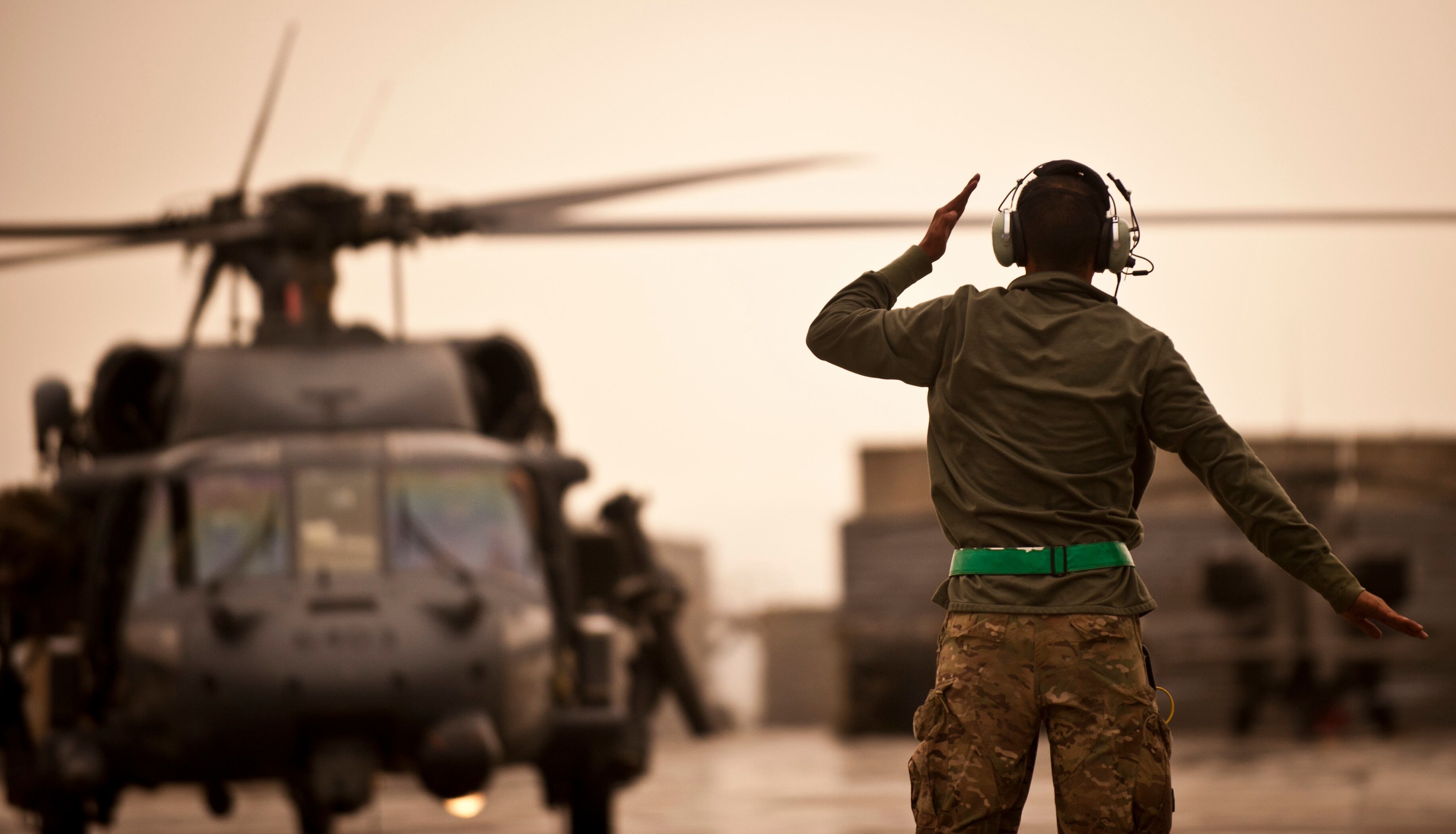The first American air-to-air kill involving manned aircraft in almost two decades opens up a new chapter in American warfare — and perhaps a more dangerous phase of the air war against the Islamic State terror group.
Nobody knows yet what the ramifications will be from the June 18 shootdown of a Syrian Su-22 fighter jet by a Navy F/A-18 Super Hornet, but it — along with Air Force F-15s shooting down drones on two recent occasions — quickly raised tensions in the volatile Syrian theater.
The Russians — who are backing the government of Syrian dictator Bashar al-Assad — threatened to start treating all aircraft flying west of the Euphrates River as hostile targets. They also threatened to shut off a hotline set up with Americans to deconflict their aircraft.
Air Force Chief of Staff Gen. Dave Goldfein told lawmakers June 21 that the deconfliction line at the Combined Air Operations Center at Al Udeid Air Base in Qatar remains open, and officials "remain in conversation with" their Russian counterparts.
At the same time, he said, Secretary of State Rex Tillerson is "heavily engaged" with the Russians to try to de-escalate tensions, and Marine Gen. Joseph Dunford, chairman of the Joint Chiefs of Staff, regularly speaks to his Russian counterpart, Gen. Valery Gerasimov.
"Our hope, of course, is that we return to a little better sense of normalcy, and we continue to keep the dialogue open," Goldfein said.
But experts, including former Air Force officials, say that the developments could presage a return to the days of air-to-air combat and will likely affect how the Air Force conducts operations.
"Ever since the Russians got involved [in Syria], the potential for this kind of thing to happen went up drastically," said retired Gen. Herbert "Hawk" Carlisle, former head of Air Combat Command. "Everybody from Gen. Dunford and [Defense] Secretary [Jim] Mattis on down, we’ve been talking about the risks that exist with this environment."
The situation could become even more dangerous, said former Air Force Chief of Staff Gen. Merrill McPeak.
"You’ve got U.S. and Russian aircraft conducting combat operations in what amounts to the same airspace," McPeak said. "There are deconfliction problems associated with that, which are obvious. And, to date, we’ve managed to keep these deconfliction problems under control by what amounts to extraordinary cooperation between the sides. If that cooperation falls apart, as it could very well, then you have the prospect of U.S.-Russian air combat. And that ought to be troubling to everybody."

A pilot with the 18th Aggressor Squadron prepares to taxi in his F-16 Fighting Falcon during an exercise in Australia. Experts believe if the war over Syria continues to heat up, it could change the way fighter pilots fight.
Photo Credit: Tech. Sgt. Steven R. Doty/Air Force
The conflict is growing more complex as ISIS teeters on the brink of losing its strongholds in Mosul, Iraq, and Raqqa, Syria, and the various powers start to jockey for control of vacated territory, said Peter Singer, an analyst with the New America Foundation.
"Forces start to bump into each other, and get nearer to each other, and even fight with each other," Singer said. "That’s what you see with Assad forces, SDF [Syrian Democratic Forces], it’s just a pretty wild mix there. And then you’ve got our forces on the ground [with SDF forces], in some cases mixed in, and that’s a lot of what’s happening here."
These developments could go one of two ways, Singer said: They could lead to more clarity regarding who can operate where as far as supporting or opposing various proxy forces in the area. That would be a positive outcome.
This kind of clarity amounts to, "I’ve warned you [that] if you operated here, carried out strikes here, I would shoot. You didn’t believe me. Now I did, and so you never do it again," Singer said.
Alternatively, he said, "things [could] get out of control, and get out of control in a really bad way."
And with actions being taken that don’t reflect a clear political strategy, he said, that’s particularly troubling.
"Did we just walk backwards into, best case, a no-fly zone, [or] worst case, a war against a state power?" Singer said. "The escalation could become not just a tit-for-tat, but become a furball — lots of shooting in a very quick time. That’s the worst-case scenario."
'It's a big deal'
Lt. Gen. Jeffrey Harrigian, head of U.S. Air Forces Central Command, now faces a considerable challenge, Carlisle said: How to conduct operations while being unable to discern what the Russians and Syrians might do.
Despite the Russians’ public claims that they’re going after the Islamic State, Carlisle said, it’s obvious that, in many cases, their targets have been non-ISIS rebel forces. The continually evolving situation will likely lead the military to take a look at its rules of engagement and how it conducts operations, Carlisle said.
"This clearly is going to have an impact, there’s absolutely no doubt," he said. "It’s a big deal. We’ll go back and find out exactly what happened, we’ll figure out exactly what the self-defense response was, the situation that led up to this, what the communications were or were not. And we’ll continue to adjust."
Singer said that if a pilot finds he needs to engage in air-to-air combat to defend himself or allied forces, he almost certainly wouldn’t open fire without the OK from his superiors.

Two F-16 Fighting Falcons from the 31st Fighter Wing at Aviano Air Base, Italy, fly over Europe during a training event with the Estonian air force.
Photo Credit: Senior Airman Christine Griffiths/Air Force
If the Russians aren’t bluffing about targeting coalition aircraft, and ground-based air defenses in Syria do start painting them, McPeak said, that changes the situation enough that the Air Force would likely have to review and, perhaps, alter its rules of engagement.
The potential continues to exist for further air-to-air skirmishes to erupt between coalition aircraft and the Syrians or Russians, Carlisle said — and maybe even losing some coalition planes.
Despite the skill and technological advancement of coalition air forces, he said, Russian and Syrian air forces also have high quality planes and weapons.
Already, the Australian air force suspended air operations above Syria as a precaution after the Navy jet shot down the Syrian jet. Australia’s Defense Force Chief Mark Binskin later said he expected operations to resume soon.
If things calm down, Singer said, it’s unlikely other coalition partners would follow suit and suspend their operations. But if the situation continues to escalate, he said, more allies could get nervous and halt air operations.
Increased CSAR demand
These developments underline the coalition’s need to have effective search and rescue capabilities to quickly recover downed pilots and other air crew.
The case of Jordanian pilot Muath al-Kasasbeh — who was captured by ISIS in 2014 after his F-15 crashed near Raqqa — likely weighs heavily on the minds of military officials.
ISIS burned al-Kasasbeh to death in a cage and released a video of his murder that enraged many in Jordan.
One of the safeguards the U.S. military has in place is the Special-Purpose Marine Air-Ground Task Force Crisis Response–Central Command.
The unit is deployed to an undisclosed base in the Middle East to make sure that doesn’t happen to an American or allied pilot. Those Marines are always on call — or sometimes already in the air while an air mission is ongoing — ready to conduct a tactical recovery of aircraft and personnel mission if needed.
The Air Force also has combat search-and-rescue capabilities stationed throughout the region, Carlisle said, as does the Navy.

Combat search and rescue assets, including HH-60G Pave Hawk helicopters and their crews, are in high demand. Here, a maintainer marshals a HH-60G Pave Hawk helicopter prior to take-off at Bagram Airfield, Afghanistan.
Photo Credit: Capt. Raymond Geoffroy/Air Force
But there are never enough CSAR assets to have them placed everywhere the military would like, to ensure that they’re close enough to quickly scoop up pilots before ISIS gets them, Carlisle said. The fate of the Syrian pilot, shot down by the Navy jet, remains unknown.
"This is going to ramp up the demand signal [for CSAR], and many of our coalition partners that have limited search and rescue capability will make their flying and conducting operations contingent upon having U.S. search and rescue capability close at hand," Carlisle said. "It’s going to put an added stress on our capacity to conduct search and rescue."
That could accelerate the strain already placed on airmen and their planes. If they have to fly, or be ready to fly more CSAR missions, that is an additional burden, Carlisle said. And if wary coalition partners continue to back off of air operations, that could also leave Americans having to fill the gap.
All of which will exacerbate the readiness problems created by budget cuts, readiness shortfalls, and manning shortfalls in recent years, Carlisle said.
"We’re burning them out, we’re sending them back continuously," he said. "This added stress. The added requirement for probably more search and rescue [and] more capacity of airplanes is only going to exacerbate that lack of capacity that we have, and increase the challenges for readiness."
investing in air power
Air Force Lt. Col. Michael Geczy of the 78th Expeditionary Fighter Squadron was the last American pilot to down a manned enemy aircraft, when he shot down a Serbian MiG-29 over Bosnia on May 4, 1999, with an air-to-air missile.
McPeak and Singer agreed it’s unlikely that we’ll see the return of old-school dogfights, and air-to-air combat will continue to be conducted at a distance.
But, Singer said, the potential for air-to-air fighting will inevitably change the way pilots think about and prepare for their missions. For the past 15 years or so in Iraq and Afghanistan, armed aircraft have solely been engaged in combat missions such as bombing targets on the ground or close-air support. But they may need to quickly swing into air-to-air mode, he said, adding, "it’s a different type of operation and mentality."
"That affects how you think about what single planes are equipped with, and the operations that you plan out," Singer said. "That means that the way the pilots are thinking about the operations, the training, the briefings, what they talk about in their off time" is going to change.
Carlisle said Air Force pilots will be ready to engage in air-to-air combat, but he doubts they’re eager for such confrontations.
"The last person who wants to go to war is the guy getting shot at," Carlisle said. "Folks love doing the job. They love flying airplanes. But the threat of being shot at has been going on for the United States Air Force since 1990. It makes you tense, nobody wants to get shot at."
McPeak said he hopes the U.S. and its coalition don’t pull back in the face of Russian threats.
"We’ve made a big investment in air power," McPeak said. "It means we can go anywhere in the world that we want to and create airspace control. And I don’t want the Russians or anybody else thinking that they can eliminate that situation or make it deteriorate in any significant way. It’s them that introduced themselves into this situation late in the game. Their presence has not been benign, quite the reverse. It’s they that should back away, not us."
"And, by the way," McPeak said, "I believe if they try to escalate, they will get their butt kicked, so that’d be fine also."
Stephen Losey is the air warfare reporter for Defense News. He previously covered leadership and personnel issues at Air Force Times, and the Pentagon, special operations and air warfare at Military.com. He has traveled to the Middle East to cover U.S. Air Force operations.





